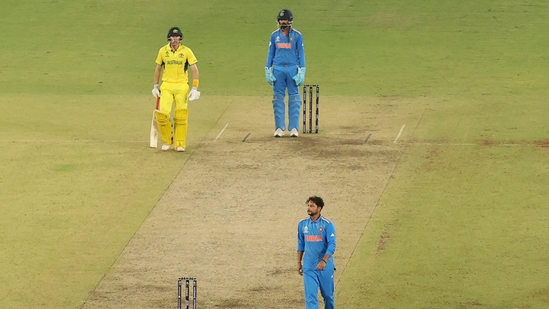How pitch tactic for World Cup final backfired on India
Sluggish track where there should’ve been a belter? BCCI’s smart surface plan ends up biting Team India
Home advantage is a term used to describe the benefit the hosts have over the visitors in team sport. This could mean the fans cheering in the stands, unique insight into the pitch, and an understanding of the ground in terms of conditions and dimensions.

One might reckon that home advantage shouldn’t have mattered to this Indian team. They were on a 10-match winning streak, and the level of their play was leaving their opponents awestruck. Going into the final in Ahmedabad, the top five had averaged 67.6 collectively. The pacers were scything through opponents. The spinners were doing way more than holding up one end. And there were all in form, with no visible chinks in the armour.
Then, why did the Board of Control for Cricket in India feel the need to nudge the curator of the Narendra Modi Stadium pitch to prepare a wicket that can only be described as dry and slow? Did they fear their own side needed that assistance? Were they afraid of Australia’s big-match prowess? Or were they trying to be too smart by half?
As the Travis Head and Marnus Labuschagne stand pushed India into a corner, former Australia cricket captain Ricky Ponting, during TV commentary, reckoned that India’s pitch ploy “backfired on them”.
“It was very, very sub-continental conditions today,” he said. “A wicket preparation that has probably ended up backfiring on India to be totally fair.”
Former England captain Nasser Hussain, speaking on Sky Sports, felt India’s untested lower order led to KL Rahul and Virat Kohli approaching a defensive game plan after losing three quick wickets. And the slowness of the wicket meant that playing shots was difficult and that, in turn, saw India hit just two boundaries in a 29-over phase after Rohit Sharma’s dismissal.
“India are still a great side — but the pitch brought Australia into it,” Hussain said on Sky Sports. “India’s four bowlers not being able to bat that well came back to haunt them. That’s why Rahul and Kohli couldn’t go hard. They were worried about Shami at No.8.”
Not business as usual
After all, this wasn’t your regular Ahmedabad wicket. In the IPL final that took place in May, Gujarat Titans (GT) smashed 214 runs in their 20 overs, and in response, Chennai Super Kings hammered 171 in 15 overs to win by five wickets (DLS method). GT scored 233 in the playoff too and on three other occasions they had scored more than 200. Evidence suggests the track can normally be good for batting and offer value for shots. Shubman Gill scored 890 runs in the season and many of them came at this venue.
So, why tinker with something that wasn’t broken? Why bowl a googly at your own team?
Former Australia fast bowler Brett Lee, speaking to Fox Sports, felt a bouncier wicket could have aided India’s world-class pace attack. “I was surprised, if you have a look at the Indian attack, Mohammed Siraj and Mohammed Shami, they’ve been on fire this World Cup,” Lee said. “It’s the quick bowlers who have been doing very well, so I actually thought they’d try to nick off the Aussie top order. If they could have made some serious inroads early, that would have been their best way to try and take out that 240 and dominate. I was surprised they prepared a low and slow wicket which didn’t help them.”
No match, let alone a big final, should be decided on the spin of a coin. The 92,435 people who turned up at the stadium came to watch a team win on the strength of their skills. When external factors start to get involved, it takes the fun out of the contest, and makes players rely on a variable no one can truly control.
The luck factor exists in every sport but both teams usually play on an even field. Australia were the better team on the day, no doubt, but whoever was responsible loaded the dice and made it a lottery – one in which India could not get the right numbers. Trying to get a certain kind of pitch also conveys the fear of losing -- not a message to send out before a big final.
If India want to be the best in the world, the focus on the nature of pitch must stop. Trying to manipulate the conditions reveals a weakness, not a strength.
On Sunday, at a crucial juncture, it played a part in stopping a team that had looked pretty much unstoppable through most of the tournament.






